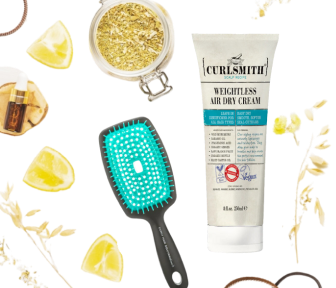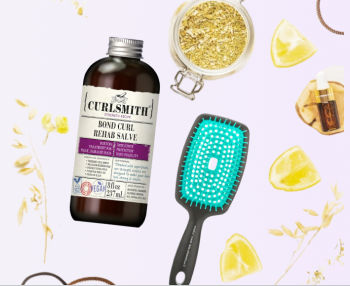Oils and your hair… well does the mention of the word "oil" pique your interest or is it just a “no way” answer?
This week I saw a FB post that followed the advice of Lorraine Massey (creator of the Curly Girl Method / Curly Hair Method) and said the use of oils will just block your hair and cause problems. There was a time that Lorraine encouraged the use of oils and now she does not. But I digress… oils are still being used by many curlies and wavies. Some love them, some do not. At the end of the day your hair (and scalp) will decide if this is for you.
As you experiment and delve further into the Method, it is evident that even if you see and follow someone with hair that looks like yours – what they do may or may not work for you.
So this question about oils doesn’t have a straight yes or a straight no answer. It depends on your hair, it depends what oil you are using and for what reason. Almost any oil will help repel water by sitting on top or maybe soaking in a little to the hair shaft.

Oil will not moisturize your hair but can provide lubrication and flexibility. Oils can penetrate the hair shaft, which also stops the hair from taking on too much water and swelling. This is typically more specific to high porosity hair or hair that has some damage - perhaps from colour - versus low porosity hair. Healthy hair should be naturally more water repellent.
Your conditioner, as well as many other great hair products, in all likelihood will already contain oils. Their position in the ingredients list will indicate how much oil is in the formula. The first 5-7 ingredients in the list will be the ones that are the most in quantity.
Penetrating vs. Sealing Oils
Oils fall into a category of penetrating, less penetrating, not penetrating or sealing. Examples of oils that penetrate well are olive, castor, coconut, babassu and sunflower oils. Next, or less penetrating, would be sweet almond, grape seed, flaxseed and argan oil. There are many more oils you can experiment with. A chart is inside the article referenced at the bottom from the Science-y Hair Blog.
How to Use Oils in your Curly Hair Routine
One of the best ways to use an oil is as a pre-poo as it gives the oil more time to penetrate your hair. If you hair is fine, oily, or both a pre poo of just a regular conditioner might be another option. Remember this is a light oiling (not heavy!) for a few hours or overnight before shampooing. The longer it is in your hair it will penetrate more, so err on the side of caution if this is a new technique for you. You could try the Righteous Roots Pre-Poo Pre-Wash Detangler or Ecoslay's Hot Sauce Pre-Poo Oil Treatment.
You can add penetrating oils to your conditioner or deep conditioner. Another idea is just a little applied to clean damp hair after your leave in. Just remember using an oil directly on damp hair will not keep it hydrated if it isn't already – you need a leave in conditioner underneath or it will just be fluffy. The Mielle Organics Mongongo Oil Style Setting Spray is a mix of oils and emollients that can be applied to wet hair giving you the benefit of a leave in with oils for lubrication. The Mielle Organics Babassu & Mint Deep Conditioner also contains babassu oil, a penetrating oil.

Oils can be also be used to scrunch out the crunch (SOTC). A few drops of oil on your hands reduces the friction between your skin and your hair, especially if your skin is dry. Try the Curl Keeper Dry Oil Elixir for SOTC. Combine this with a small amount of Tweek Cream Hairspray and you are set for multiple day hair with great hold.
Last but not least if your scalp is dry a really nice massage of 5 minutes with oils is very relaxing. It will also help with flaking and itchiness that can come around at this time of the year. For a great scalp massage, try Righteous Roots Rx with the Righteous Roots Scalp Massager (aaahhh so nice) or the Jessicurl Stimulating Scalp Massage Oil. Regular scalp massages can encourage hair growth by increasing blood flow to your scalp.
Photo courtesy of Curl Keeper.
References
- Science-y Hair Blog (https://science-yhairblog.blogspot.com/search?q=oils)








